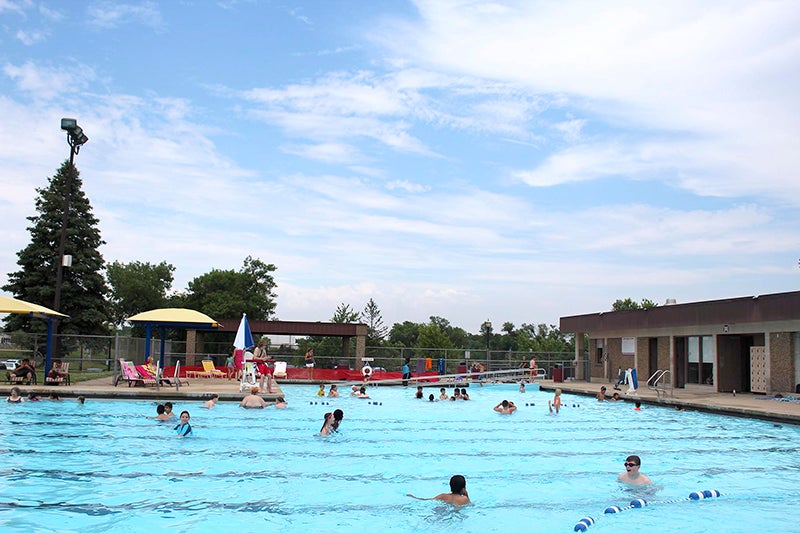More support needed for Austin Gig effort
Published 11:32 am Sunday, June 12, 2016
By Greg Siems
Vision 2020 director
As City Administrator Craig Clark noted in an op-ed last week (“Legislature strikes out on broadband”), our state leaders continue to overpromise and underdeliver when it comes to expanding high-speed broadband Internet access across Minnesota. This isn’t just a matter of being able to download music and movies faster (although that is a nice perk). The pressing issue is how to keep our local economy competitive in the 21st century.
If you’ve been following the efforts to make Austin a “Gig” city, you know the challenges we face here in our community. Research by the Vision 2020 Community Wide Technology committee found that Austin is already falling on the wrong side of the “digital divide.” Internet speeds in larger cities, where it makes more economic sense for providers to invest, continue to improve. Smaller cities, like us, are left with aging technology and providers that are less willing to spend on upgrades due to smaller customer bases.
Most of these upgrades involve the use of fiber optic cable to increase the speed and reliability of broadband networks. Unlike traditional copper wire and wireless products that transmit electrical signals and can get bogged down by too much demand, fiber optics use light beams to send data and are virtually limitless in their capacity to handle more speed and traffic. Once the cables are in place, future technological improvements can be accommodated simply by switching out the above-ground hardware.
It’s only a slight exaggeration, then, to say that communities with access to this technology are able to do business at the speed of light, while places like Austin are essentially forced to compete with one hand tied behind their backs. This is already creating a vicious cycle, with more business starting up and moving to where they can get the best speeds while other communities fall farther behind.
Smaller communities across Minnesota have recognized these trends and are taking matters into their own hands. Places like Monticello, Jackson, Two Harbors, and more have installed city-wide fiber networks and are beginning to reap the benefits. An excellent place to learn more about these projects is the Community Broadband Networks website, www.muninetworks.org. There you can find FAQs, maps, economic development data, and much more.
To take an example from outside Minnesota, Chattanooga, Tennessee, has been the most widely publicized and studied effort of a community offering state-of-the-art broadband to its citizens. Although Chattanooga is obviously different than Austin in many ways, it offers a glimpse at the transformational potential of a community fiber network.
Chattanooga spent about $220 million dollars developing their network, which has translated into 2,800 new jobs and generated over $865 million in economic growth since 2010, a nearly 4-to-1 return on investment. To put this in perspective, it’s estimated that constructing a similar network in Austin would only cost around $35 million. That’s still a lot of money, to be sure, but we have to consider the whole balance sheet. Based on Chattanooga’s experience, we could be looking at over 700 news jobs and $137 million injected into the local economy.
When we talk about moving our community forward and making Austin a more attractive place for businesses and families, I can’t think of many investments that would as impactful as community fiber. What’s more, the potential benefits will decline the longer we wait to move on this project. Many communities across the state have already taken action, while Rochester and the Twin Cities won’t stop growing any time soon. If we continue to fall behind the curve, the less we will stand out as an attractive destination for new businesses. There is no reason Austin can’t join the ranks of these other cities and proactively position ourselves for growth in the 21st century.
Think back to 2010-11 when we tried to attract Google to set up a fiber network in Austin. Although I wasn’t here yet, so many people have told me about the passion and excitement that was flowing through town at the time. Everyone knows that Austin wasn’t selected for that project, but we don’t have to rely on distant corporations to make it happen. We can do it ourselves.
This is where we need your help. We are still searching for organizations that want to invest in this project for Austin, which is made even more challenging by the tepid support from the state legislature. The best way for us to stand out is to have a critical mass of people talking about community fiber and demonstrate that we are a forward-thinking community that wants to see it happen. So talk to our local officials, your colleagues at work, family, friends, neighbors and anyone else you can think of about community fiber. Your support is essential and I look forward to building another homegrown, hi-tech movement right here in Austin.
You can visit www.gigaustin.org or www.muninetworks.org to learn more, and please don’t hesitate to contact me at (507) 437-3448 or greg@vision2020austin.com with questions.


